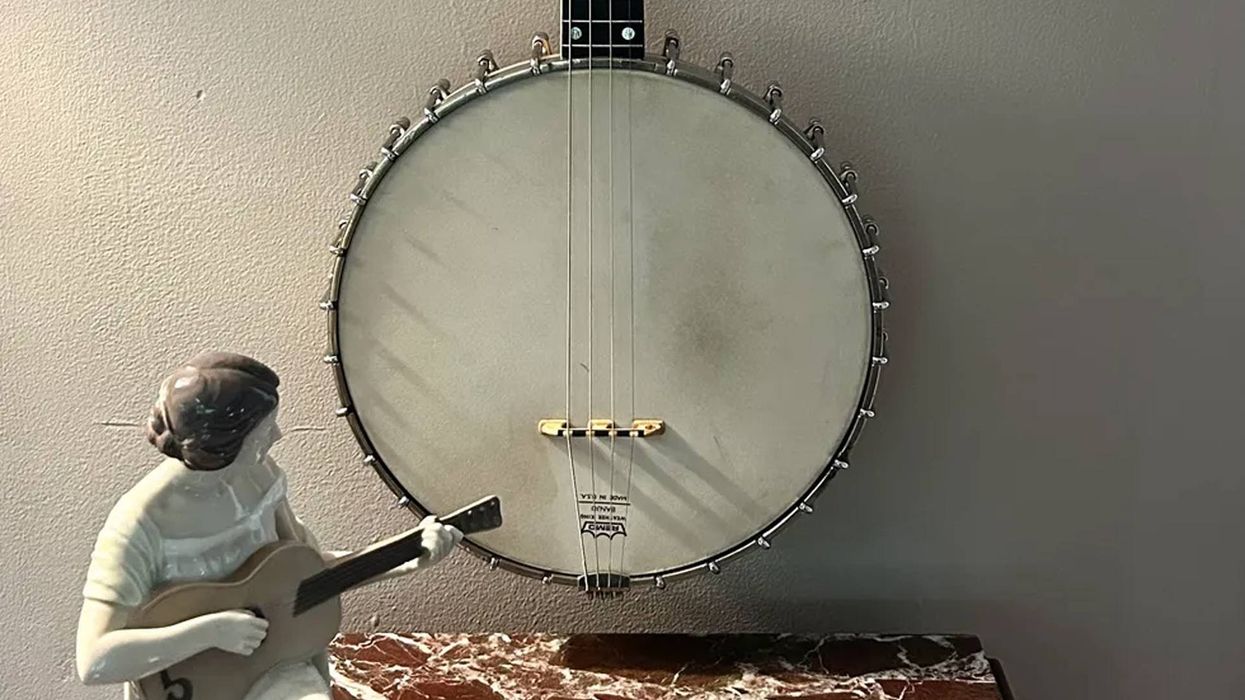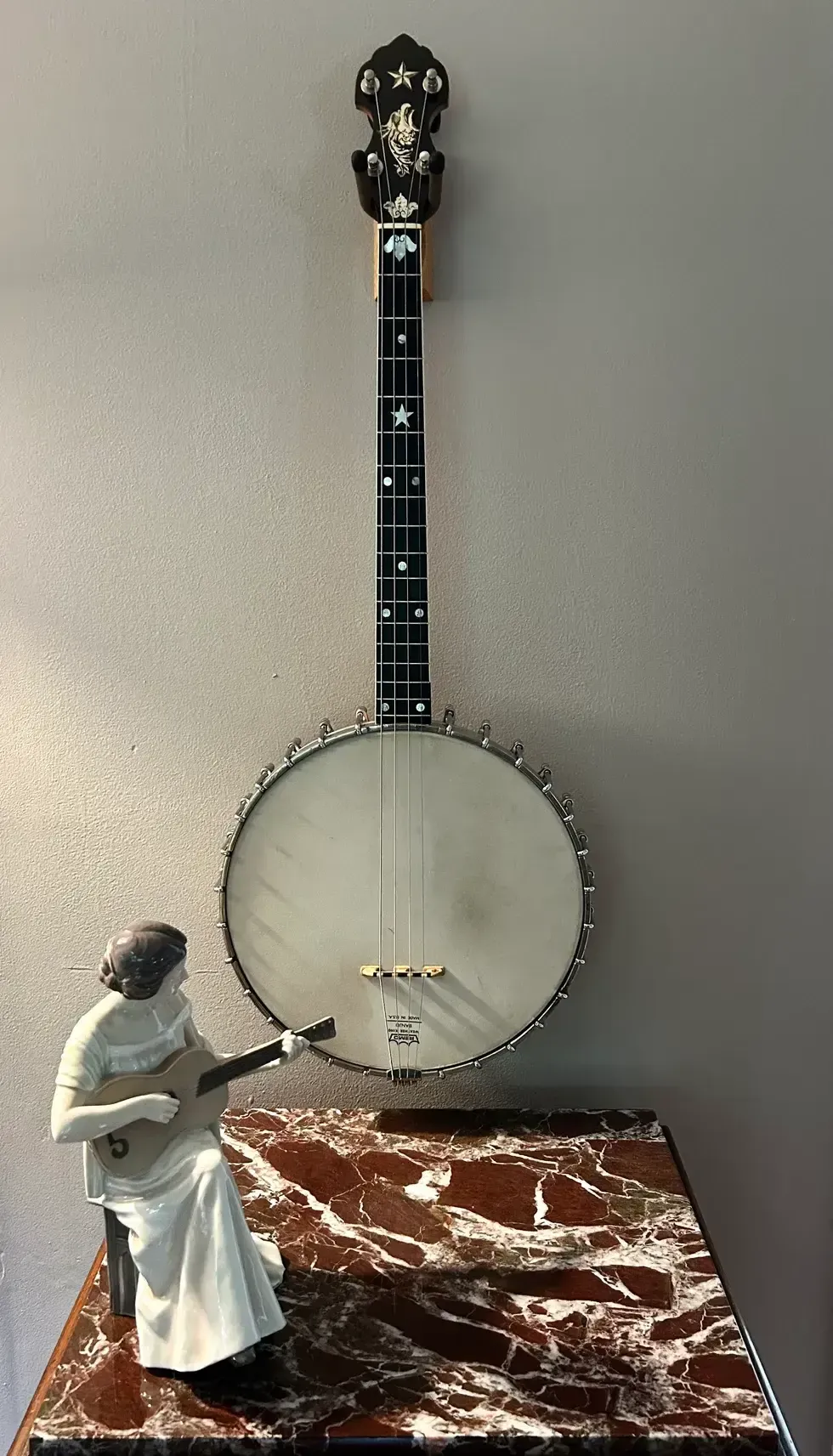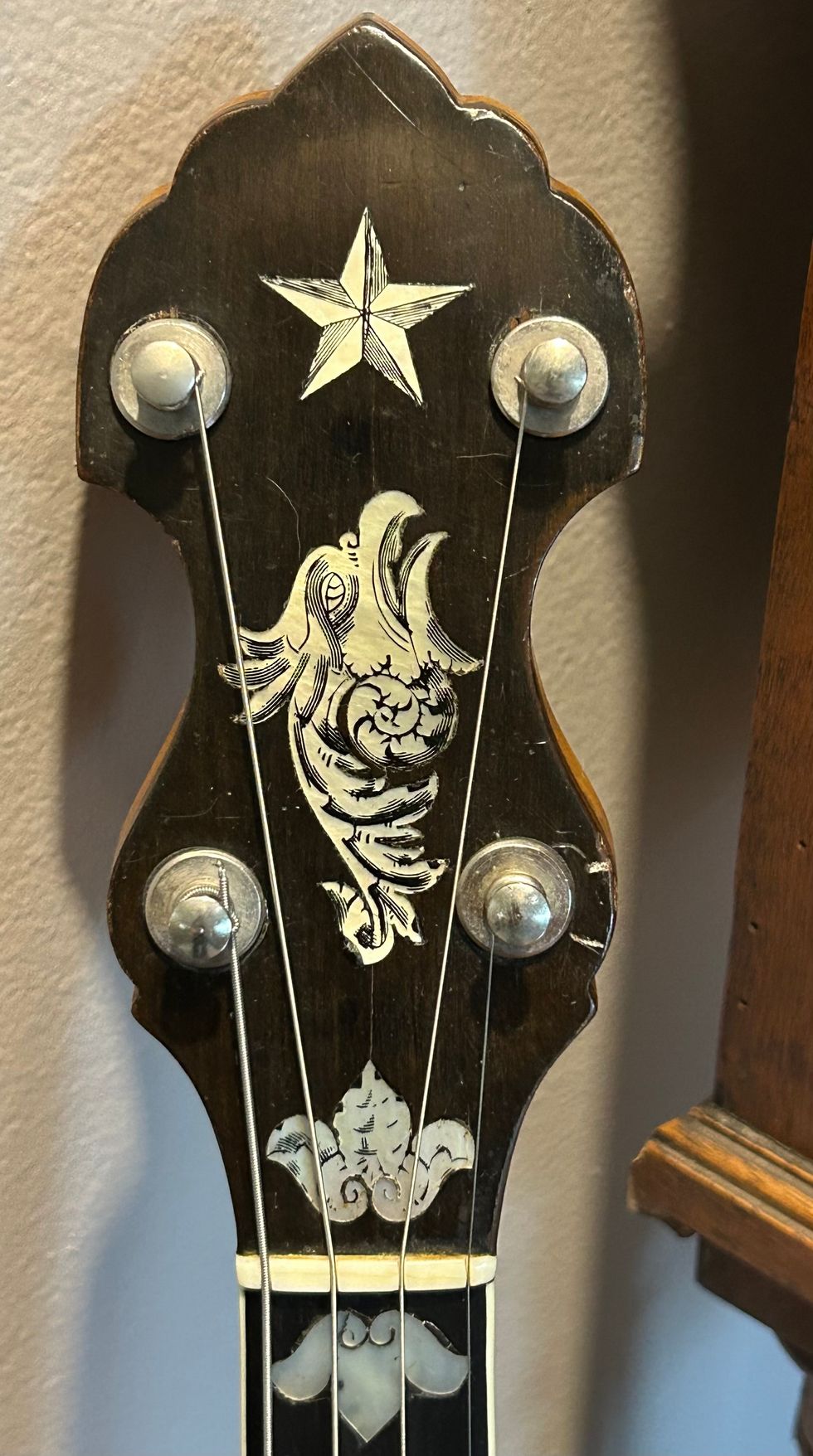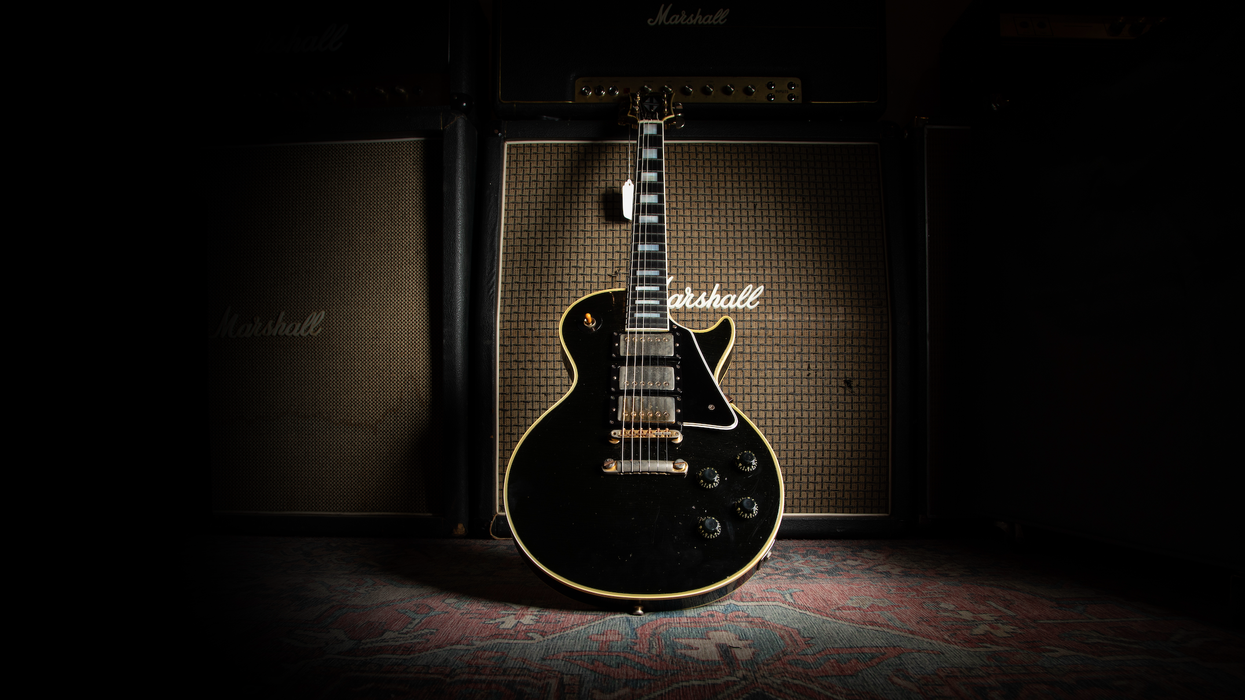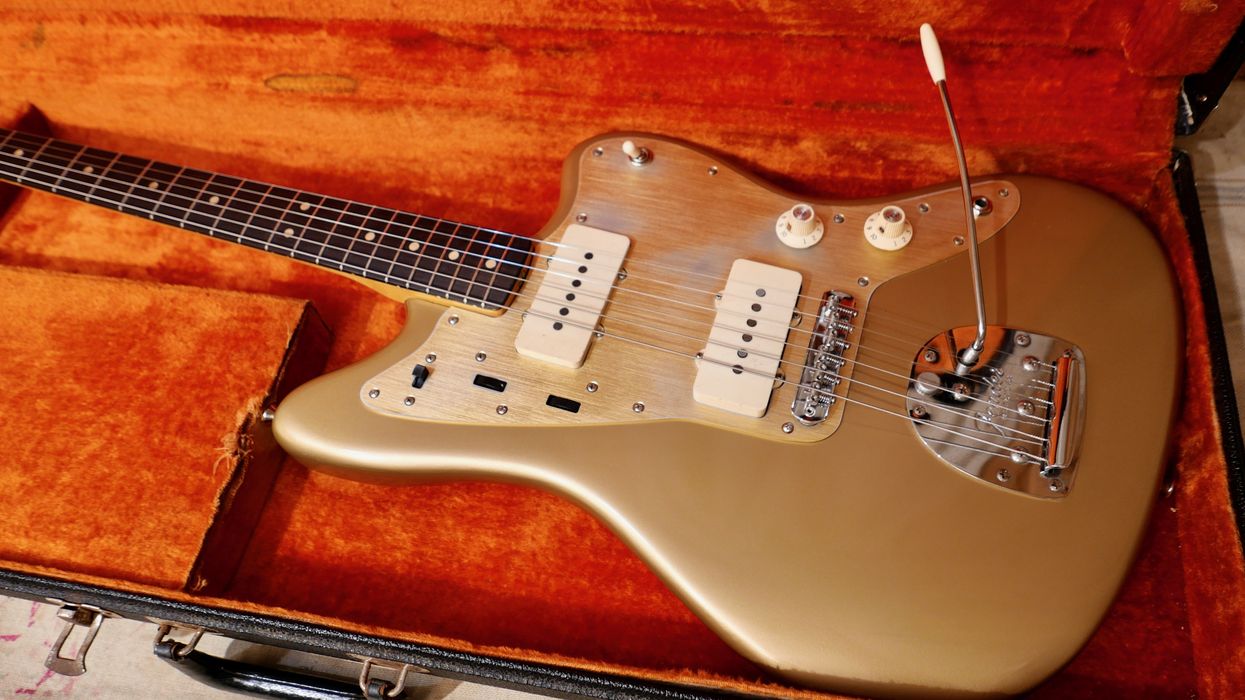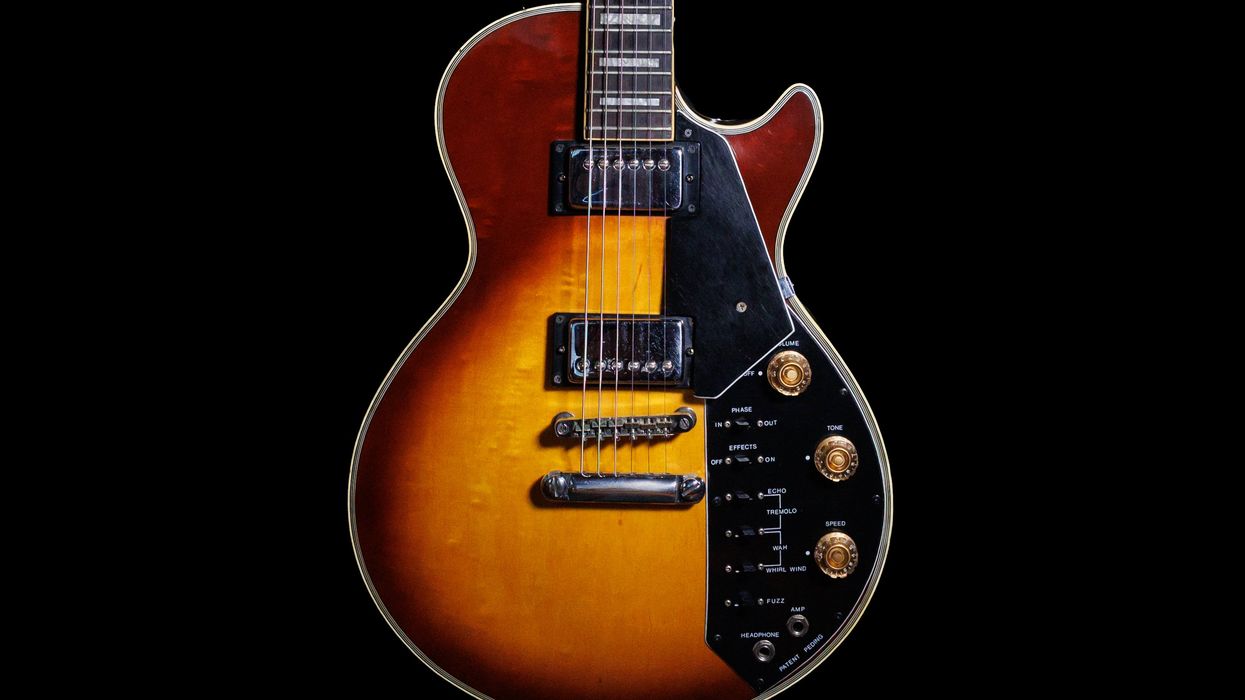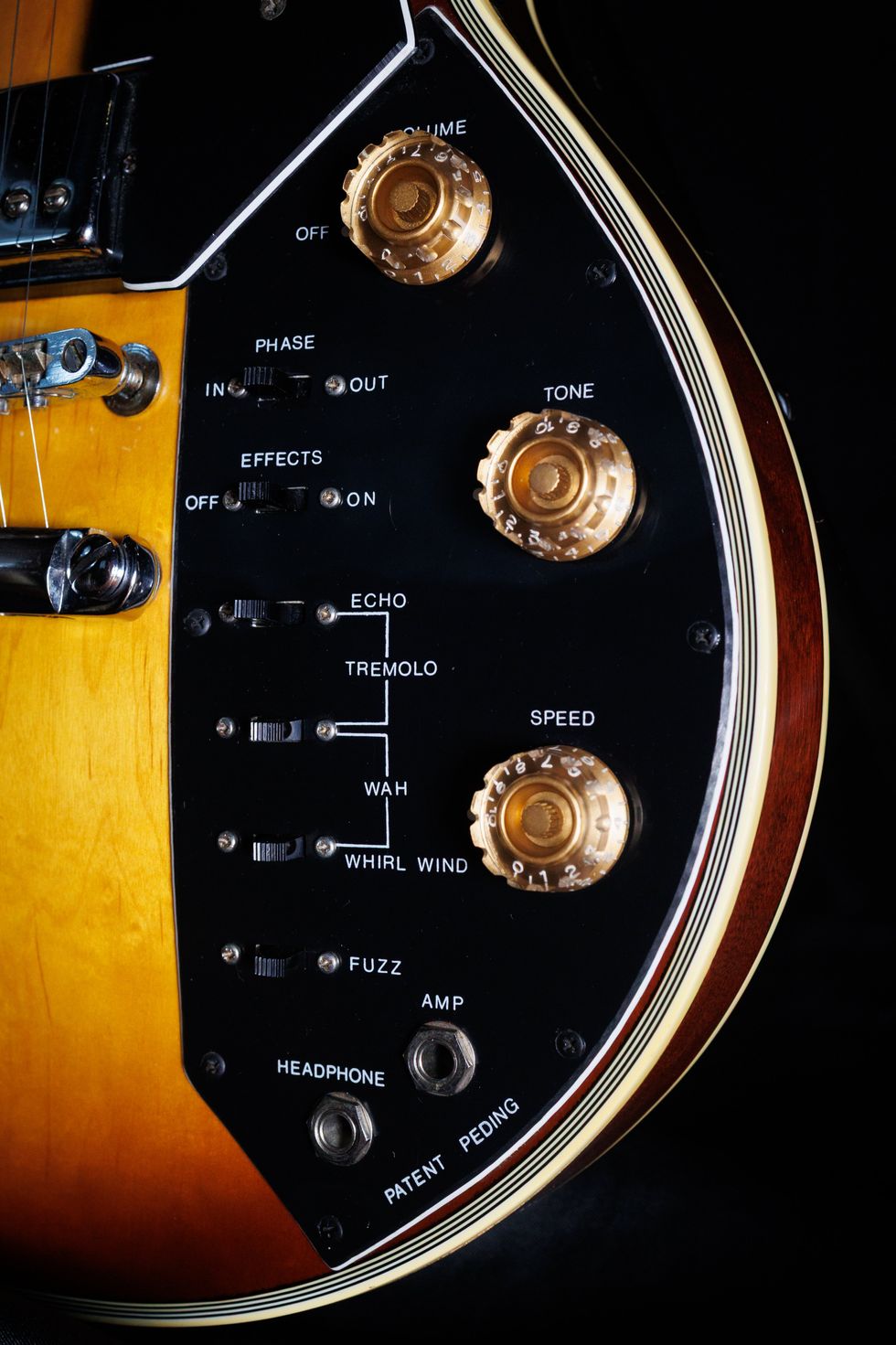More than 70 years after
its first appearance, the
dreadnought remains the most
popular flattop body style among
acoustic guitarists. The big-body
dreadnought (named after the
HMS Dreadnought, a revolutionary
British battleship launched in
1906) was originally designed by
C.F. Martin & Company in 1916
for the Oliver Ditson Company
of Boston. These guitars were sold
under the Ditson brand until the
late 1920s, when Ditson went out
of business.
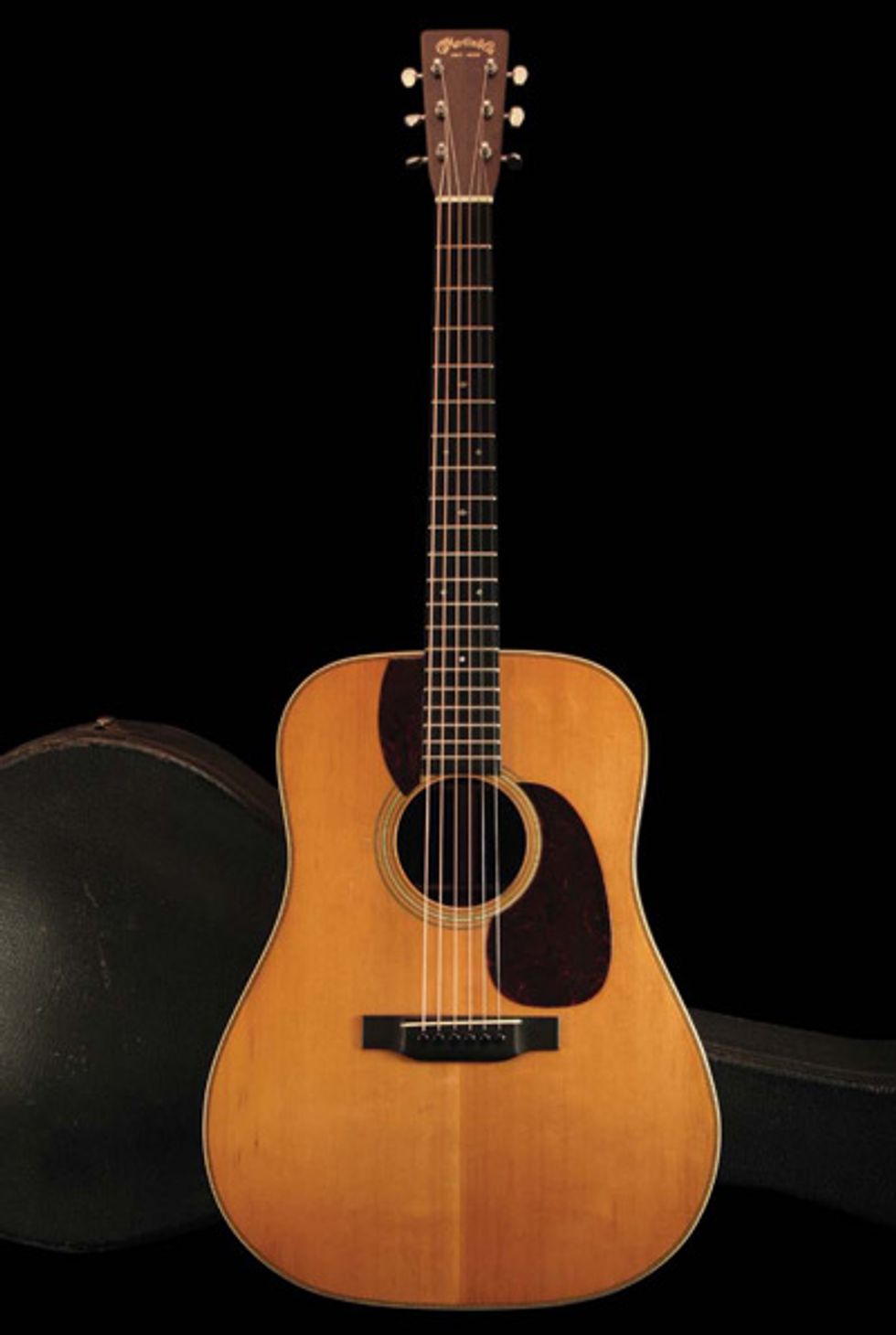
This 1937 Martin D-28—serial #66725—has the iconic dreadnought body style
that epitomizes the flattop steel-string guitar.
At the time, Martin believed such a large guitar produced too much bass and spoiled the delicate balance of the Martin sound. This philosophy changed during the hard times of the Great Depression, which started in 1929. The slowdown in business motivated the family-owned company to try new ideas to keep musicians interested in Martin instruments. One of these ideas was to release dreadnought-size guitars in 1931 under the Martin brand.
This month’s 1937 Martin D-28 has the classic features that make it among the most celebrated guitars of the Golden Era. These include a spruce top with Brazilian rosewood back and sides, scalloped X bracing (until 1944), a “belly” bridge (introduced on Martins in 1929), 14 frets clear of the body (a 1934 innovation), a mahogany neck with an ebony fretboard, diamond-shaped fretboard inlays (until 1944), and herringbone top trim (offered until 1946).
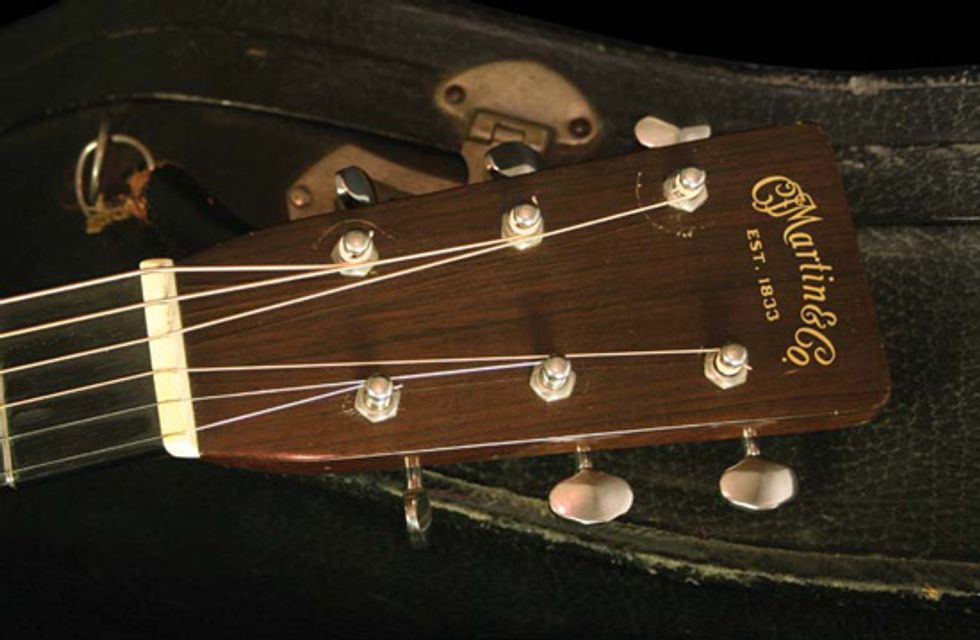
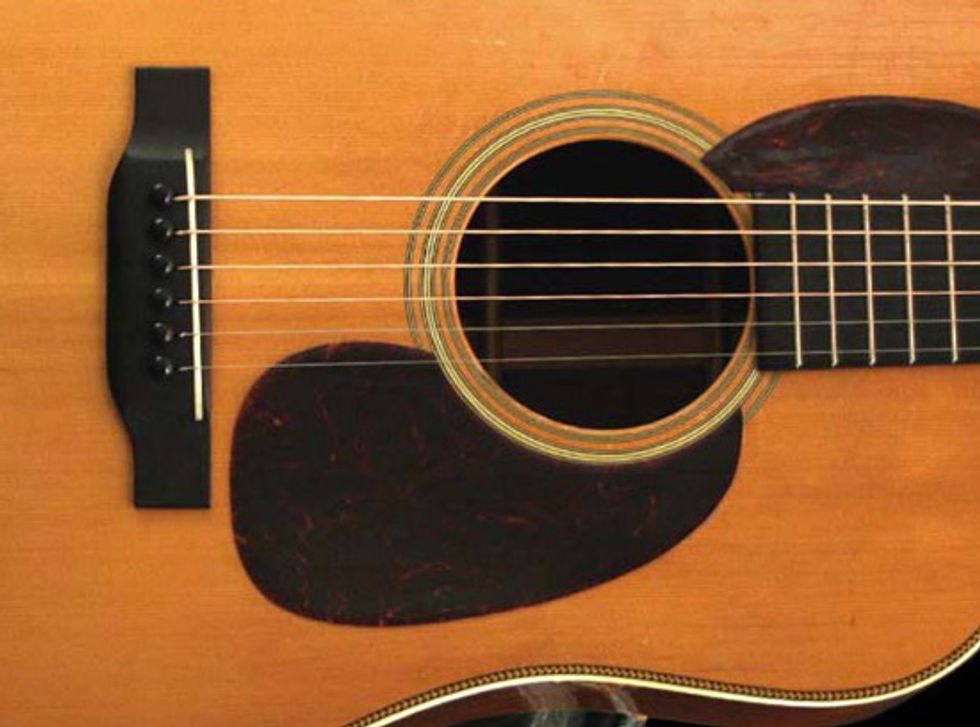
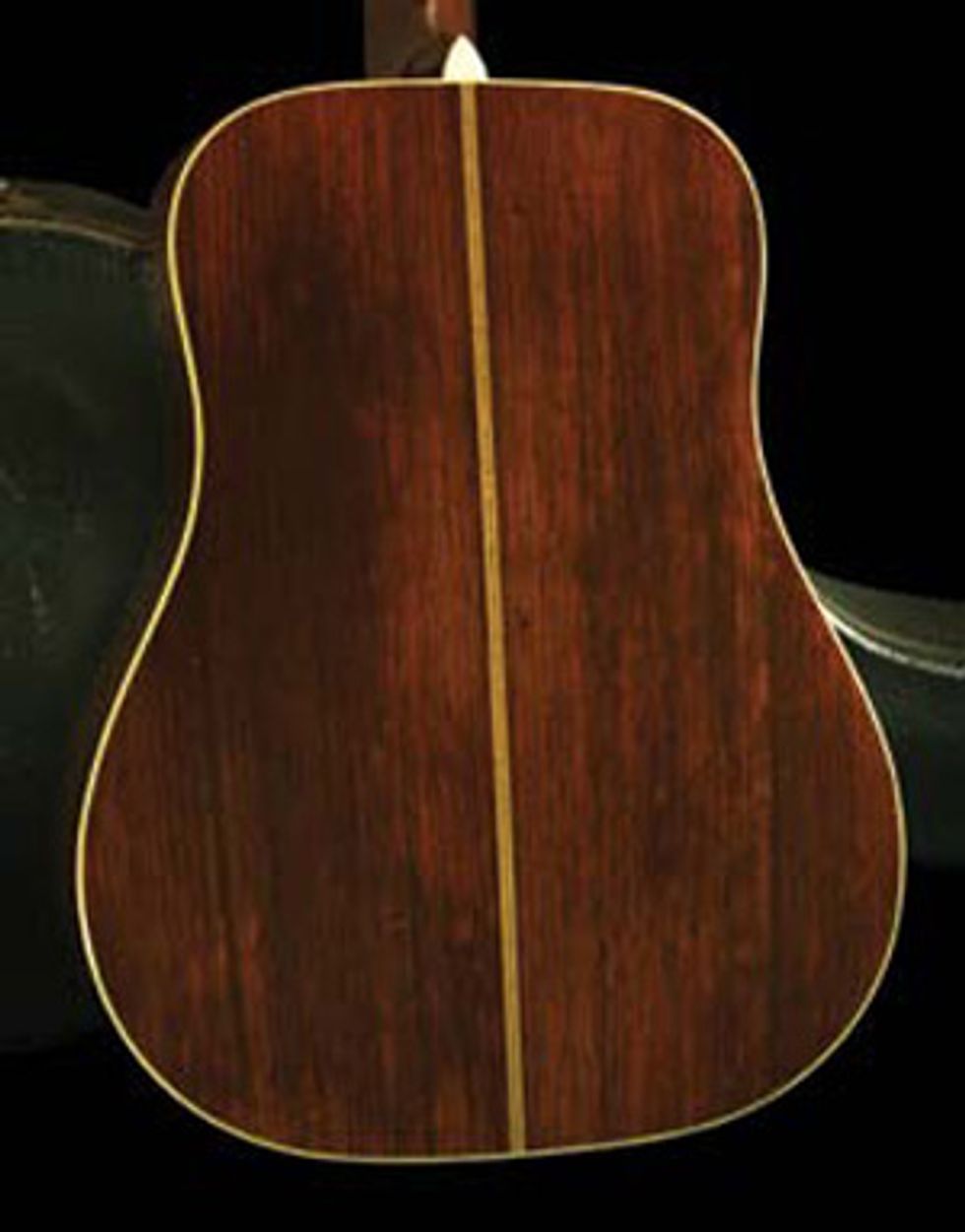
TOP: With their slender buttons, the vintage tuners enhance the elegant simplicity of this D-28’s
headstock. MIDDLE: Like modern D-28s, this vintage beauty has a solid spruce top, an
ebony “belly” bridge, and a 14-fret neck joint. BOTTOM: This D-28’s Brazilian rosewood back and
sides make it particularly desirable to collectors and players alike.
If you’re interested in exploring the history of the mighty D-28 and other classic Martin steel-strings, you’ll find a wealth of information in the two-volume Martin Guitars: A History Revised and Updated by Richard Johnston, Dick Boak, and Mike Longworth, Martin Guitars: An Illustrated Celebration of America’s Premier Guitarmaker by Jim Washburn and Richard Johnston, and in The Martin Book by Walter Carter.
Dave ’s Guitar Shop
Dave Rogers’ collection is tended by Laun Braithwaite and Tim Mullally and is on display at:
Dave’s Guitar Shop
1227 Third Street South
La Crosse, WI 54601
davesguitar.com
Photos by Mullally and text by Braithwaite.














